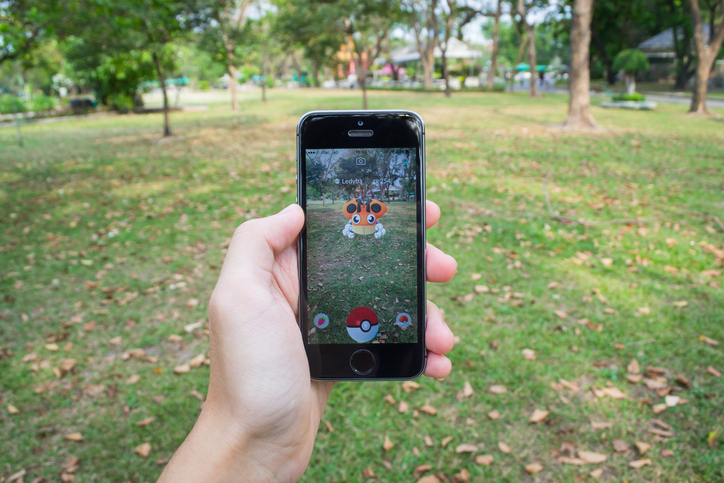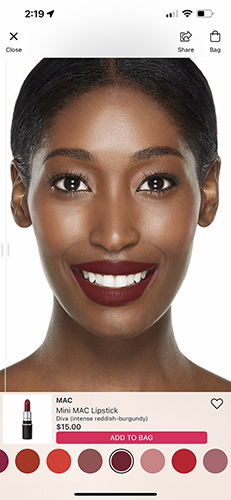Digital Transformation
How Innovative Marketers Are Using Augmented Reality to Engage Customers
Innovation is the name of the game in 2023. Artificial intelligence, machine learning, augmented reality, and virtual reality are hitting all the major headlines in the news and on social. These new technologies are simplifying our lives at home and work in awe-inspiring ways.
Right now, everyone’s talking about generative AI and how it’s transforming content and design. But there’s more on the tech horizon than AI. If you’re not already thinking about how augmented reality (AR) can play a role in your content marketing, you should be.
What is Augmented Reality?
Any time you use software or a device to add new sights, sounds, or sensory stimuli to something you see, that’s AR. This is different from virtual reality (VR), which creates an entirely new and immersive world to interact in, like the metaverse or other VR games. Think of AR as sprinkles on a cupcake. It doesn’t alter the entire cupcake; it just makes it more… festive.
One of the first wildly popular and well-known uses of AR is the game Pokemon Go. It’s basically a scavenger hunt IRL (in real life) that uses your smartphone’s camera and geolocation to hunt down different Pokemon hiding around your town. Ever used a filter on TikTok or Instagram? You’ve experienced augmented reality firsthand.

The Case for Augmented Reality
AR has a life outside of entertainment. In a 2019 Nielsen IQ global survey, consumers listed augmented and virtual reality as the top tech they expect to help them in their daily lives. Half of those surveyed were willing to use it to help them choose products.
This is good news for businesses and their marketing teams. Not only are consumers willing to consider using augmented reality in their decision-making process, but AR increases the opportunity for personalization by combining it with consumer data, AI, product recommendations, offers, content, and more.
AR made strides into brick-and-mortar businesses during the pandemic lockdown. Since people couldn’t come into the stores, the stores had to find a way to go to them, and augmented reality was an ideal avenue.
And like remote work, Zoom meetings, and flexible hours, AR isn’t going anywhere in our post-pandemic society. It’s a disruptive technology primed to change how buyers shop and interact with brands. In 2017, the Harvard Business Review said every business would need an AR strategy. AR allows brands to extend their reach to consumers outside the traditional digital space and become part of their daily lives.
3 Ways to Use Augmented Reality in Marketing and Business
Augmented reality is having a field day in the marketplace, and smart marketers are looking to jump on the bandwagon to take advantage of this emerging tech tool. It can drive more sales, help customers make decisions, and generate buzz around your product or service.
As you consider if AR is a good fit for your business, keep its three main uses in mind: entertainment, education, and evaluation.
1. Trying before buying.
Augmented reality allows consumers to “try” a product before buying it—all without leaving the comfort of their homes. As more consumers move to purchase online (or at least, online research), companies that utilize AR can give customers a chance to see how a product would work in their homes or even on them, lowering the risk to purchase.
Giving prospects this level of virtual access also lowers the risk for businesses by reducing items abandoned in shopping carts, fewer returns, and sealing the deal for those customers who may have been on the fence to purchase without this option.
Amazon, Wayfair, and Ikea use AR to see how a couch or a lamp looks in your room before you add it to your shopping cart. Beauty brands like Sephora, Ulta, and L’Oreal have created AR opportunities (in-store and online) where consumers can try makeup before purchasing.
Gucci, one of the first companies to allow people to try on sneaks virtually, now lets you purchase “digital-only” versions. They only show up in pictures or videos (as a filter) you take so that you can share them on social media. You can also unlock your sneaks to use on your Roblox character. (What a collab!)
Let’s look at bigger purchases consumers are starting to make online. Acura created an AR game to take their sports sedan for a spin in a virtual race against other test drivers. And in the ultimate “try it before you buy it,” SmartTek created an augmented reality experience for potential homebuyers to walk through full-scale houses without leaving the comfort of their current home.
2. Teaching how to use.
Augmented reality is having a moment in the medical and educational fields as it helps add an entirely new dimension to learning. It helps make complex ideas more concrete and can bring topics to life for students in and out of the classroom. Museums are even using AR to bring extinct animals back to “life.”
Brands can use AR to augment training and education for their customers as well as their team members. Create AR opportunities that show your customers how to use your products or even give them more information on the products they’re considering buying.
Hyundai was the first automaker to implement an AR owner’s manual in 2015. This gives owners how-to information for maintenance, repairs, and features. With a smartphone or tablet, 3D images or videos will pop up when users scan various areas of their vehicle (both under the hood and inside the cabin).
AR is transforming customer support centers by combining live videostreams with computer-generated images. This allows agents to show rather than (try to) tell customers how to fix their devices.
3. Keeping entertainment alive.
The most widely known use for augmented reality is in entertainment. Brands can leverage AR to generate excitement around a new product launch or service. As mentioned earlier, gaming is where AR really got its start in common usage. But entertainment goes well beyond a scavenger hunt. Adding entertaining AR can be as simple as creating a fun filter to be used on social that promotes your new product launch. Or, it can be a complex and immersive experience.
Netflix has used AR filters and ads to promote earlier seasons of Stranger Things. But for season 4, the media company created an in-person AR experience to get people talking. While the overall experience was wonky, buzz about the experiences (held in NYC, London, and San Fransisco) was exactly what the company needed—almost 287 million hours of the season were viewed in the opening weekend.
Pepsi, no stranger to innovative marketing campaigns, installed AR at a London bus stop to liven up a normally boring wait for the next bus. You know people were lining up to use this bus stop once the word got out.
Don’t Be Afraid to Play with Augmented Reality in Marketing
Augmented reality in marketing is still in the early stages of adoption—there’s a lot to iron out as it continues to take shape, especially around the conversations of consumer privacy and data collection. But that shouldn’t stop you from exploring what it might look like to integrate AR into your content marketing strategy.
While it still needs to be intentional and drive results, augmented reality in marketing has the ability to make mundane things a little more lively and improve personalization and interactions with your customers.
Get marketing tips and emerging MarTech insights delivered straight to your inbox every week. Subscribe to The Content Strategist newsletter today.
Image by hakuleGet better at your job right now.
Read our monthly newsletter to master content marketing. It’s made for marketers, creators, and everyone in between.





